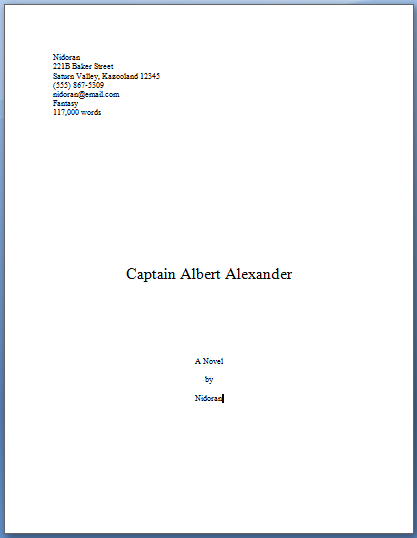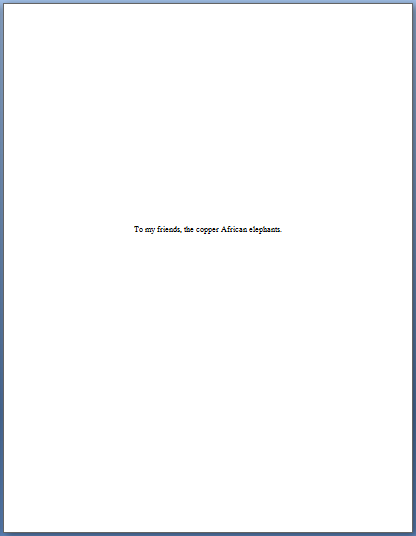hello, I am just a tiny lesbean that loves to read and draw. I love art in every form (am 18)
216 posts
Latest Posts by olympereeeeeeeeeeeeeemtblr - Page 3
What do you mean I have to "write" my "story"??? Is it not enough to have elaborate conversations between my characters in my head, stupid and plot irrelevant?

honestly fuck all romance except for whatever the fuck that little shy kid and the dude with severe daddy issues had in Dead Poets Society
Me, a writer, at 2 AM: "I'm going to sleep all night without any interruptions."
Plot bunnies, multiplying at an alarming rate in my head as soon as I close my eyes:






*passionately thinks about story instead of writing it*
“happy endings” this “sad endings” that– you can debate the relative merits of each till your mouth goes dry and it’s still not a meaningful binary. Is the ending coherent and emotionally appropriate for the story? Cool.
‘redemption arc’ this and ‘redemption arc’ that
wheres an arc where the hero gets morally corrupted by a villain and switches sides and becomes an even bigger threat as a result
where is my bastardization arc
everybody is all “ I support people with mental illnesses” until these people start showing symptoms lmao
If I died without hearing a single guy tell me that I’ve bewitched him body and soul and that he loves , loves , loves me and never wishes to be parted from me from that day on , I wouldn’t have lived a happy life at all .

me: god it’s so sad that this character has to die, they could have had so much better
my friends: you’re the writer, you’re the one who killed them, you could just not kill them
me: no i’m gonna
Writing Tips from an Editor (Who Also Writes)
People throw around the phrase “Show, don’t tell” all the time. But what does it mean? Really?
When I’m editing a client’s work, I always explain what I mean when I say “Show, don’t tell,” so I know we’re on the same page (pun intended).
FYI: This advice is really 2nd or 3rd draft advice. Don’t tie yourself in knots trying to get this perfect on the first go. First drafts are for telling yourself the story. Revisions are for craft.
Ruthlessly hunt down filter words (saw, heard, wondered, felt, seemed, etc.). Most filter words push the reader out of narrative immersion, especially if you’re writing in 1st person or a close 3rd person. “She [or I] heard the wind in the trees” is less compelling than “The wind rustled through the trees” or “The wind set the bare branches to clacking.” Obviously, the point of view character is the one doing the hearing; telling the reader who’s doing the hearing is redundant and creates an unnecessary distance between the character’s experience and the reader’s experience of that experience. Was/were is another thing to watch out for; sometimes, nothing but was will do, but in many instances—“There was a wind in the trees” “There were dogs barking”—“was” tells, whereas other phrasing might evoke—“The wind whispered/howled/screamed through the trees” “Dogs snarled/yipped/barked in the courtyard/outside my door/at my heels.”
Assume your readers are smart. What does this mean? Don’t tell the reader what your characters are thinking or feeling: “Bob was sad.” How do we know? What does Bob’s sadness look like, sound like? What actions, expressions, words indicate Bob’s sadness? Does Bob’s sadness look different than Jane’s would?
It also means that you need not repeat information unless you have something new to add to it—even if it’s been several chapters since you first mentioned it. I think a lot of readers fall into this trap because writing often takes a long time. But what takes a writer days or weeks or months to write might take a reader fifteen minutes to read. So, if the writer keeps telling the reader about so-and-so’s flaming red hair or such-and-such’s distrust or Bob’s blue eyes or Jane’s job as a neurosurgeon, the reader gets annoyed.
The last thing you want is your reader rolling their eyes and muttering, “OMG, I KNOW” at the story you’ve worked so hard to write. It certainly means you don’t need to have characters tell each other (and through them, the reader) what the story is about or what a plot point means.
Along these same lines, let the reader use their imagination. “Bob stood, turned around, walked across the room, reached up, and took the book from the shelf.” Holy stage directions, Batman! A far less wordy “Bob fetched the book from the shelf” implies all those irrelevant other details. However, if Bob has, say, been bedbound for ten years but stands up, turns around, and walks across the room to fetch the book, that’s a big deal. Those details are suddenly really important.
Write the action. Write the scene with the important information in it. Let the reader be present for the excitement, the drama, the passion, the grief. If you’re finding yourself writing a lot of after-the-fact recap or “he thought about the time he had seen Z” or “and then they had done X and so-and-so had said Y,” you’re not in the action. You’re not in the importance. Exceptions abound, of course; that’s true of all writing advice. But overuse of recapping is dull. Instead of the reader being present and experiencing the story, it’s like they’re stuck listening to someone’s imperfect retelling. Imagine getting only “Last week on…” and “Next week on…” but never getting to watch an episode. I’m editing a book right now with some egregious use of this. The author has a bad habit of setting up a scene in the narrative present—“The queen met the warrior in the garden.”—but then backtracking into a kind of flashback almost immediately. “Last night, when her lady-in-waiting had first suggested meeting the warrior, she had said, ‘Blah blah blah.’ The queen hadn’t considered meeting the warrior before, but as she dressed for bed, she decided they would meet in the garden the next day. Now, standing in the garden, she couldn’t remember why it had seemed like a good idea.”
That’s a really simplified and exaggerated example, but do you see what I’m getting at? If the queen’s conversation with the lady-in-waiting and the resulting indecision are important enough to be in the narrative, if they influence the narrative, let the reader be present for them instead of breaking the forward momentum of the story to “tell” what happened when the reader wasn’t there. Unless it’s narratively important for something to happen off-page (usually because of an unreliable narrator or to build suspense or to avoid giving away a mystery), show your readers the action. Let them experience it along with the characters. Invite them into the story instead of keeping them at a distance.
Finally, please, please don’t rely on suddenly or and then to do the heavy lifting of surprise or moving the story forward; English has so many excellent verbs. Generally speaking, writers could stand to use a larger variety of them.
(But said is not dead, okay? SAID IS VERY, VERY ALIVE.)




Formatting your Manuscript
If you’re planning on one day turning your manuscript in to literary agents and publishing houses, you need to make sure it’s formatted correctly. In many cases, your manuscript will be skipped over if it isn’t done to industry standard, so here’s the basics that you’ll need if you don’t want to be ignored. Before I get started, please know that this is aimed specifically at fiction manuscripts. If you’re writing non-fiction or a memoir, the expectations will be different, so it would be wise to Google what you need.
The Basics
Make sure your font is 12 point Times New Roman, Courier New, or Arial. These are the only three fonts you are allowed to pick from.
Your spacing should be 1 inch on all sides of the text. This is the default on most word processors, but double check your settings just to be sure.
Your text should be double spaced.
All of your indentations must be a half inch. Do not press indent. Instead, drag over the top arrow on the ruler to have every new paragraph automatically indent.
The Title Page
The top left-hand corner of your title page will have all your personal information. They want to see your name, address, phone number, e-mail address, the novel’s genre, and word count.

Your novel’s title is allowed to be between 20-24 point font if you want. Bold is also an option, but not necessary.
The title will appear halfway down the title page.
“A novel by [your name]” will be about three quarters of the way down the page.
The Next Pages
If you have a dedication, it will be on its own page.
If you have some sort of verse or quote, those will also need their own pages.
Do not include a page for acknowledgements.
The Chapters
Chapter titles will be 12 point font. No bolding or italics.
Chapters will start from one quarter to halfway down the page.
An easy way to format chapter headings is to press enter five or six times
Make sure you always start your chapters the same way every time.
When you start a new chapter, make sure you use a page break to bump the new chapter onto a new page. This will keep it in place so that it will never budge, no matter how much you cut out or add to the previous chapter.
Page Numbers
Page numbers will start with 1 on Chapter 1 of your manuscript. Page numbers will not appear on the title page or dedication page.
Page 1 will be labeled in the footer of Chapter 1. It should be centered.
Page 2 will be in the header of the next page.
From page 2 onward, your headers will be labeled like this:

If you insert a section break after the title and dedication pages, it will make it easier to insert the page numbers.
For the most part, this is the most important of what you’ll need to know for formatting your manuscript. I used this video as reference, so I’m trusting everything it says is true because it was made by an author who has several novels published, and because it was uploaded this year, it should be up to date.
But just remember, whenever you go to turn in a manuscript, make sure you check the website of the agent or publisher you’re trying to contact. They might have specifications that differ with the ones stated in this video, and you should always do whatever you can to abide by what they want.
Daydreaming of a life where I live in a little forest cottage and tend to my berry plants in the morning, check on my beehives in the afternoon, and sit with my arm around the love of my life on a porch swing sipping tea in the evening
Worldbuilding - Geography
I am currently writing a fantasy story and worldbuilding is so much harder than I thought it would be (especially because I’m a plotter and if I don’t have every single detail decided beforehand I will literally go insane). I also ended up rewriting three scenes because I realised that the geographical locations made zero sense. To prevent that, here are a couple of things you could keep in mind while creating the Geography of your world :)
(also these work for me, but if they don’t for you then that’s okay too! everyone has different writing processes :))
1. Distance
If the map of your world is relevant to the plot (such as if there is a war at a certain border, or if your characters are going on a quest or travelling somewhere) then figuring out the distance between different places is important. You need to know how far it takes to get from one place to another and how far apart different kingdoms or cities are from water, etc. Also, draw out borders and the different countries or kingdoms, and while mapping them out, try to think about the history that caused them to be wherever they are.
2. Landscape/Terrain
Once you’ve decided the locations of different countries (if you have them) and their borders, you can start to map what’s within each one. You can consider where villages are, where castles or forts are, where different species live, water bodies, islands, caves, deserts, mountains, gulfs, straits, now I’m just listing things from my seventh grade geography class, but you can refer to existing maps for inspiration while also creating something of your own. Go wild, but try to make sure it’s physically possible for such a place to exist.
3. Weather
When mapping out the landscape, think about the rainfall. Which direction does it come from? Where are the winds the strongest? And then think about how this could affect the weather. Are certain parts of the land hotter or colder because of this? Does it snow? Is there a certain area where it’s always raining? (cough, England, cough) Is there a desert somewhere because of a lack of rainfall? What races and species live in different places and how are they adapted to that weather? Based on where the winds are, where do ships come to port? (if there even are ships).
4. Layers
Is your world something that you enter from the human world through a physical doorway? (Think Narnia) Or is it something that exists within the human world, side by side? (Think Harry Potter) Is it part of the human world at all, or something entirely different? Is it a parallel universe? If your world is combined with the human world, try to imagine how they are connected/separated and the types of magic used to separate them? (Such as the Mist in Percy Jackson)
Mapping out your world is definitely important, but if it’s stressful then even just a vague outline works well enough. Don’t go too far into it if it’s stopping you from finishing your first draft, because you can always add or change later!
Things to do that are not write your wip
Make a playlist of songs that remind you of your wip
Make a playlist for each of your characters
Make fake social media accounts for each of your characters
Make a playlist that follows the emotional progression of your story’s plot (or try to at least)
Draw your characters
Cosplay each of your characters using only things you have at home
Start a writing blog because if you’re not writing, you might as well write about writing
Make Pinterest boards or aesthetics for each of your characters
Write an au with your characters
Write a song about your characters
Fill in character worksheets
Listen to your wip playlist
Figure out how you like to write the most - where, when, what snacks you like, whether you like tea or coffee, etc
Read!!!
Worldbuild! (This is more specific to fantasy I guess) My favourite way of doing this is researching vague religions, languages, historical events, and cultures that can inspire my own worlds
Feel free to add more!
RE: That post about lgbt characters for str8 ppl and lgbt characters for lgbt. That character is Jules from HBO’s Euphoria.
ahh, thanks, I dont know them, Ill check it out :)






do best friends look at each other like this?


so
denouement
climax
internal conflict
inciting incident
backstory
This is very much simplified. It’s your starting guide to the character’s arc. keep in mind that this is assuming a positive change arc, and there is more than one way to tell a story. Never follow anyone’s advice off a cliff.
Are any other Taurus witches tired of being stereotyped as a green witch in every single witch meme? Just me? Mkay lol 😅
DONT BURN WITCHES
Roast em
Your sigil game is weak, Ruth
it's 2022. donald trump has died in disgrace days after being impeached and jailed. my chemical romance's new album is coming out the same day as the new spiderverse movie. the lizzo and janelle monaé collab song is blowing up the radio. lil nas x has a verse in it. you and your partner have time and energy for dates after work after jeff bezos' assets have been seized and distributed to the public in the wake of his arrest for keeping employees in unsafe working conditions.



I made some catradora posters this weekend!



I made some catradora posters this weekend!
Fuck all romance except for whatever the fuck that tiny autistic scientist and slutty alien clone had going on
She-Ra s5 characters as John Mulaney quotes
Adora:

Catra:

Glimmer:

Bow:

Entrapta:

Scorpia:

Mermista:

Sea Hawk:

Perfuma:

Spinerella and Netossa:










Look this beautiful dog